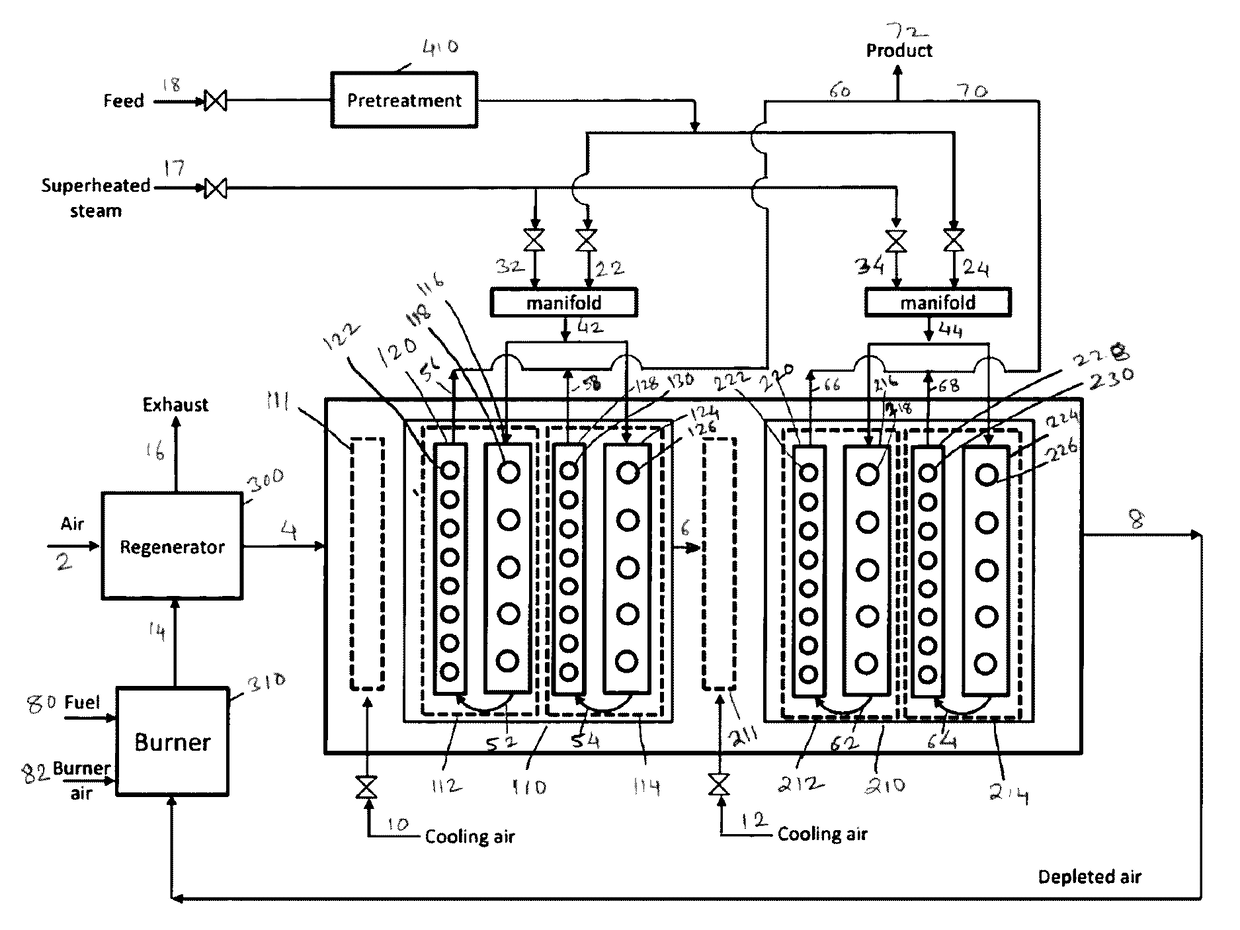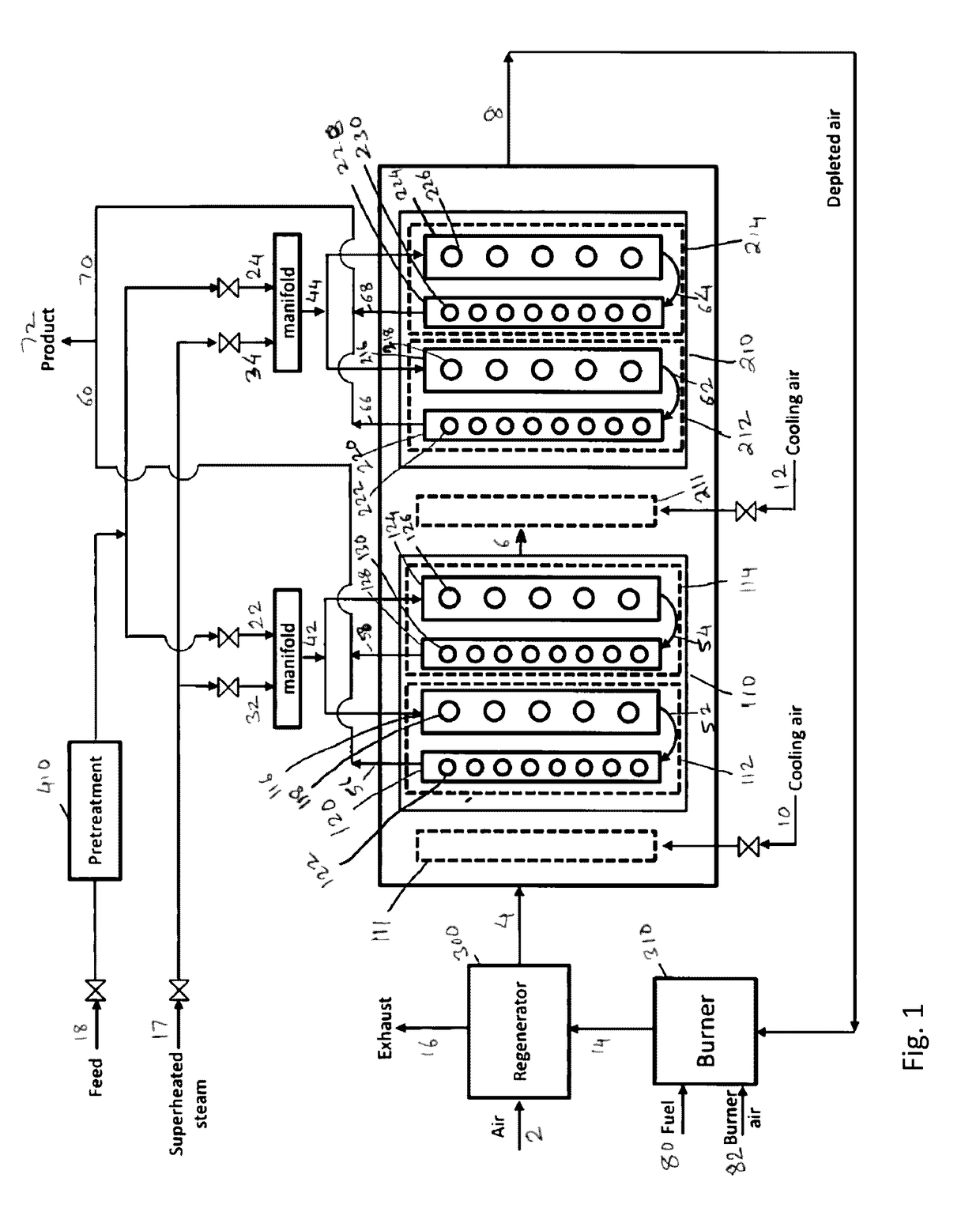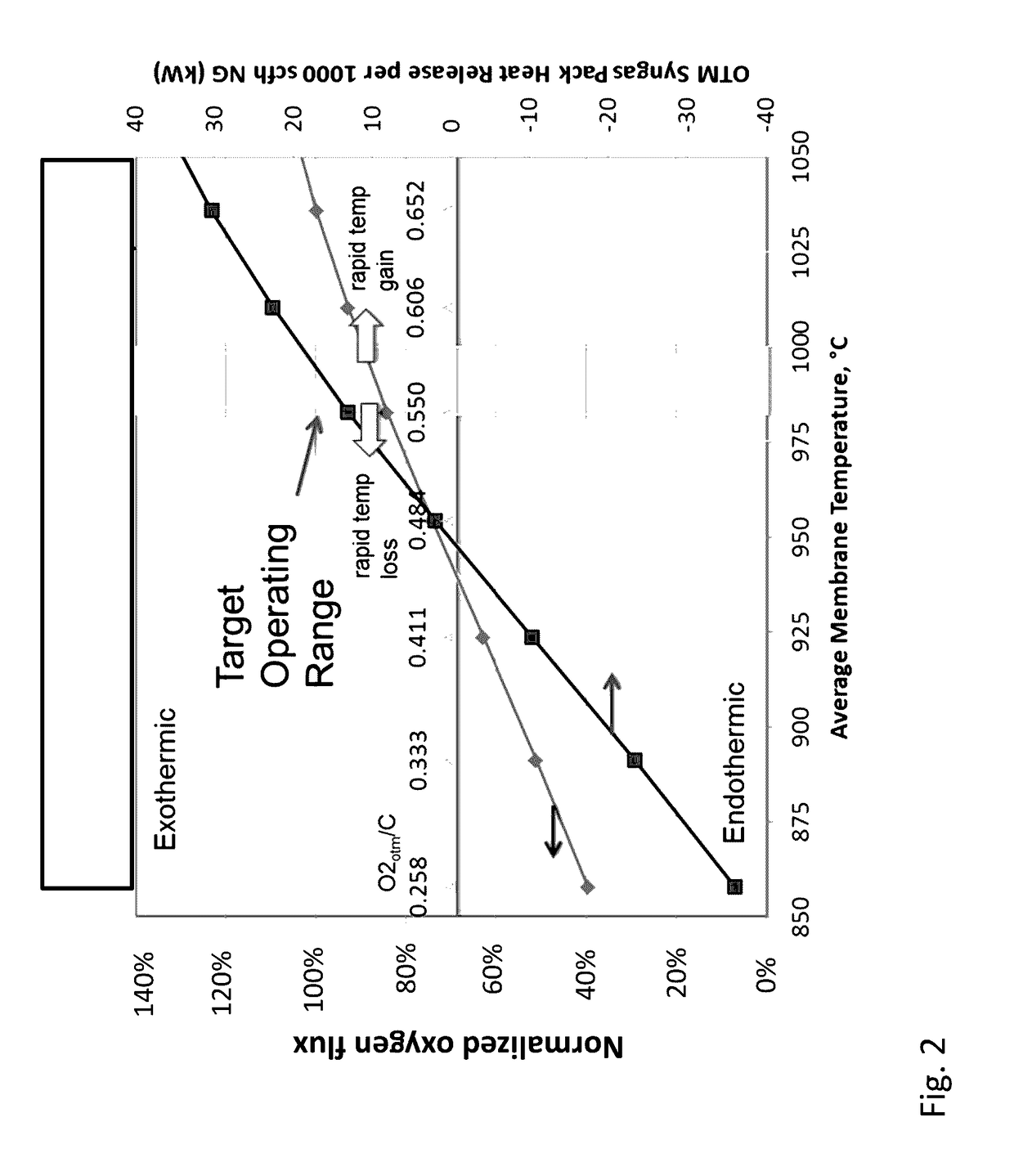Method of thermally-stabilizing an oxygen transport membrane-based reforming system
a technology of oxygen transport membrane and reforming system, which is applied in the direction of hydrogen/synthetic gas production, chemistry apparatus and processes, inorganic chemistry, etc., can solve the problems of less than adequate heat and the temperature of the surface of the otm reactor to rise beyond
- Summary
- Abstract
- Description
- Claims
- Application Information
AI Technical Summary
Benefits of technology
Problems solved by technology
Method used
Image
Examples
Embodiment Construction
[0023]Broadly speaking, the present invention may be characterized as a method for thermally-stabilizing an oxygen transport membrane-based reforming system for the production of syngas. The system comprises at least one reforming reactor pack assembly comprising two or more panel array modules, wherein each panel array module comprises a reforming panel comprising an array of reforming reactors and an oxygen transport membrane panel comprising an array of catalyst-containing oxygen transport membrane reactors. The method comprises: partially-reforming a combined feed stream comprising a hydrocarbon-containing feed stream and steam in the presence of heat in said reforming reactor to produce a partially-reformed synthesis gas stream comprising hydrogen, carbon monoxide, carbon dioxide, steam and unreformed hydrocarbon gas; feeding the partially-reformed synthesis gas stream to a reactant side of a reactively-driven and catalyst-containing oxygen transport membrane reactor, wherein t...
PUM
| Property | Measurement | Unit |
|---|---|---|
| temperature | aaaaa | aaaaa |
| temperature | aaaaa | aaaaa |
| temperature | aaaaa | aaaaa |
Abstract
Description
Claims
Application Information
 Login to View More
Login to View More - R&D
- Intellectual Property
- Life Sciences
- Materials
- Tech Scout
- Unparalleled Data Quality
- Higher Quality Content
- 60% Fewer Hallucinations
Browse by: Latest US Patents, China's latest patents, Technical Efficacy Thesaurus, Application Domain, Technology Topic, Popular Technical Reports.
© 2025 PatSnap. All rights reserved.Legal|Privacy policy|Modern Slavery Act Transparency Statement|Sitemap|About US| Contact US: help@patsnap.com



